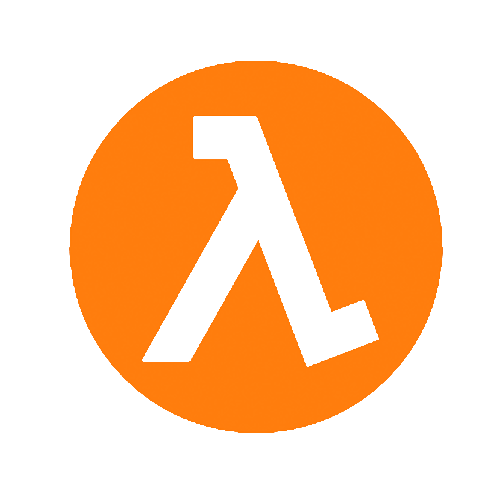Will my lib or framework work on

(and GraalVM) ?
Peter Palaga
Peter Palaga
Agenda
- Quarkus intro
- AoT1 compilation: goodies and gotchas
- How to write Quarkus extensions
1) Ahead of (run-)time
What is Quarkus
Toolkit
andFramework
for writing Java, Kotlin and Scala applicationsEmbracing existing standards
| Java EE |

|
Spring | |
|
|
|
1) via compatibility layers |
Libs and frameworks
 Eclipse Vert.x
Eclipse Vert.x
|
 Netty
Netty
|
 Apache Camel
Apache Camel
|
 Infinispan
Infinispan
|
 Caffeine
Caffeine
|
 Keycloak
Keycloak
|
 Kubernetes
Kubernetes
|
 AWS Lambda
AWS Lambda
|
 Azure Functions
Azure Functions
|
 Apache Tika
Apache Tika
|
 ElasticSearch
ElasticSearch
|
 Kogito
Kogito
|
Databases
|
|
Developer joy
- Easy to start with:
mvn quarkus:createor code.quarkus.io - Live reload:
mvn compile quarkus:dev - Runners for JUnit 5
- Isolation from GraalVM CLI
- Maven or Gradle
- Java, Kotlin or Scala
Container First
| 💾 | Small size on disk | ✓ | Small container images |
| 🚀 | Fast boot time | ✓ | Instant scale up |
| 🔬 | Low memory footprint | ✓ | More containers with the same RAM |
AoT1 compilation
its goodies and gotchas
1) Ahead of (run-)time
AoT compilation with GraalVM
$ native-image -jar my-app.jar
$ ls -lh
-rwxrwxr-x. 1 ppalaga ppalaga 19M Mar 20 14:39 my-app
$ ./my-app
...
my-app started in <20 ms
$ ps -o rss,command -p $(pgrep my-app)
PID RSS COMMAND
11229 12628 ./my-app
# ⮤ the process memory in kilobytesThe
gotchas
of the AoT compilation
An incomplete listThe
closed world
assumption
All runtime code has to be known at build time
- More effective static analysis
- Dead code elimination:
classes, fields, methods, branches
Dynaminc Classloading
in a native executable
Deloying jars, wars, etc. at runtime impossible
Reflection
Dynamic proxies
Classpath resources
JNI, Unsafe Memory Access
...
Class initializers
1/2
At build time:
- Resolve classes, run "safe" static initilizers
- Take a snapshot of the produced heap
- Store it in the executable
Class initializers
2/2
Downsides:
no file handles, sockets, threads
Complex CLI
$ native-image -jar my-app.jar \
-H:InitialCollectionPolicy=com.oracle.svm.core.genscavenge.CollectionPolicy$BySpaceAndTime \
-J-Djava.util.concurrent.ForkJoinPool.common.parallelism=1 \
-H:FallbackThreshold=0 \
-H:ReflectionConfigurationFiles=file-with-tens-of-entries.json
-H:+ReportExceptionStackTraces \
-H:+PrintAnalysisCallTree \
-H:-AddAllCharsets \
-H:EnableURLProtocols=http \
-H:-JNI \
-H:-UseServiceLoaderFeature \
-H:+StackTrace \
--no-server \
--initialize-at-build-time=my-build-time-init-list.json \
-J-Djava.util.logging.manager=org.jboss.logmanager.LogManager \
-J-Dio.netty.leakDetection.level=DISABLED \
-J-Dvertx.logger-delegate-factory-class-name=io.quarkus.vertx.core.runtime.VertxLogDelegateFactory \
-J-Dsun.nio.ch.maxUpdateArraySize=100 \
-J-Dio.netty.allocator.maxOrder=1 \
-J-Dvertx.disableDnsResolver=trueHow Quarkus works
Booting a framework
|
|
Build time boot
As much work as possible done at build time
Output: recorded bootstrap bytecode
Build oriented container
Quarkus extensions
- Units of Quarkus distribution (your Maven deps)
- Configure, boot and integrate a lib/framework into a Quarkus application
- Make the code lighter to run on a JVM
- Make the code fit for the GraalVM
Quarkus Extensions ecosystem
- Contribute to
- Or start your own project
- Follow the guide for extension authors
How to write
Quarkus Extensions
Two Maven modules
Build time module
my-ext-deployment
|
Runtime module
my-ext
|
class MyExtProcessor {
/* BuildSteps typically produce BuildItems */
@BuildStep
NameBuildItem nameStep() {
return new NameBuildItem("Joe");
}
/* BuildItems carry some payload */
final class NameBuildItem extends SimpleBuildItem {
final String name; /* The payload */
...
}
}class MyExtProcessor {
/* BuildSteps may consume BuildItems */
@BuildStep
HelloBuildItem helloStep(NameBuildItem nameItem) {
return new HelloBuildItem("Hello " + nameItem.getName());
}
@BuildStep
NameBuildItem nameStep() {
return new NameBuildItem("Joe");
}
/* helloStep depending on the nameStep
* determines the execution order */
}class MyExtProcessor {
@BuildStep
void helloStep(
NameBuildItem nameItem, /* BuildSteps may consume*/
GreetingBuildItem greetingItem, /* multiple BuildItems */
/* Results can also be published via BuildProducers */
BuildProducer<HelloBuildItem> helloProducer,
BuildProducer<FooBuildItem> fooProducer) {
/* BuildSteps may produce multiple BuildItems */
helloProducer.produce(
new HelloBuildItem(
greetingItem.getGreeting() + " " + nameItem.getName());
fooProducer.produce(new FooBuildItem());
}
}Jandex
A Java annotation indexer
and offline reflection library.
Used by @BuildSteps
to inspect the application code
https://github.com/wildfly/jandex
A common @BuildStep:
- Find classes having some annotation
- Register them for reflection
class JacksonProcessor {
@BuildStep
void registerDeserializers(
CombinedIndexBuildItem combinedIndex, /* Pass the Jandex */
BuildProducer<ReflectiveHierarchyBuildItem> reflProducer) {
DotName JSON_DESERIALIZE =
DotName.createSimple(JsonDeserialize.class.getName());
for (AnnotationInstance annot /* Query for the annotations */
: combinedIndex.getIndex().getAnnotations(JSON_DESERIALIZE)) {
/* Do some filtering */
AnnotationTarget annotTarget = annot.target();
if (CLASS.equals(annotTarget.kind())) {
DotName dotName = annotTarget.asClass().name();
Type jandexType = Type.create(dotName, Type.Kind.CLASS);
/* ... and finally register the type for reflextion */
reflProducer.produce(new ReflectiveHierarchyBuildItem(jandexType));
}}}}More Jandex usecases
- Find classes/fields/methods having some annotation
- Find classes implementing an interface
- Find subclasses of a class
- List fields, methods and constructors of a class
Build time module
my-ext-deployment
|
Runtime module
my-ext
|
class CamelProcessor {
@Record(ExecutionTime.STATIC_INIT) /* @Recorders can be injected */
@BuildStep /* ⮦ as BuildStep method params */
CamelContextBuildItem context(CamelRecorder recorder) {
RuntimeValue<CamelContext> context = recorder.createContext();
return new CamelContextBuildItem(context); /* ⮤ @BuildStep methods */
}/* ⮤ The RuntimeValue can be dispatched */ /* can invoke */
} /* to other @BuildSteps via a BuildItem */ /* @Recorder methods */
@Recorder
public class CamelRecorder {
public RuntimeValue<CamelContext> createContext() {
/* ⮤ A handle to pass values between recorders */
FastCamelContext context = new FastCamelContext();
return new RuntimeValue<>(context);
}}
Extensions may depend on each other
E.g. mp-metrics extension
depends oncamel-quarkus-core
so it can consume the CamelContextBuildItem and adjust the CamelContext as needed
class MpMetricsProcessor {
@Record(ExecutionTime.STATIC_INIT)
@BuildStep
public void configureCamelContext(
MpMetricsRecorder recorder,
CamelContextBuildItem ctxItem) {
recorder.configureCamelContext(ctxItem.getCamelContext());
}}
@Recorder
public class MpMetricsRecorder {
public void configureCamelContext(RuntimeValue<CamelContext> ctxVal) {
/* Unwrap the RuntimeValue ⮧ */
CamelContext camelContext = ctxVal.getValue();
/* ... and configure it as needed */
ManagementStrategy strategy = camelContext.getManagementStrategy();
strategy.addEventNotifier(new MpMetricsCamelContextEventNotifier());
}}Resulting application bootstrap code:
class GeneratedMain { /* bytecode in reality, pseudocode here */
static { /* Chunks recorded with @Record(ExecutionTime.STATIC_INIT) */
CamelRecorder camelRecorder = new CamelRecorder();
RuntimeValue<CamelContext> val1 = camelRecorder.createContext();
/* The order of the calls is given by
* the dependencies between the @BuildSteps */
MpMetricsRecorder mpMetricsRecorder = new MpMetricsRecorder();
mpMetricsRecorder.configureCamelContext(val1);
}
public static main(String[] args) {
/* Chunks recorded with @Record(ExecutionTime.RUNTIME_INIT) */
new VertxRecorder().openSocket(); /* can't do this in static init */
}}Mostly used BuildItems
ReflectiveClassBuildItem,ReflectiveHierarchyBuildItem
register classes for reflection in the native modeAdditionalBeanBuildItem,BeanDefiningAnnotationBuildItem
bean classes the CDI container should analyzeExtensionSslNativeSupportBuildItem
turn on SSL in the native modeCombinedIndexBuildItem,ApplicationIndexBuildItem
offline reflection and annotation index (Jandex)NativeImageResourceBuildItem
src/main/resources and resources from JARs not included by default in the native image
Extension configuration
- Extensions may expose their configuration through annotated POJOs
- These may come in three flavors:
BUILD_TIMEBUILD_AND_RUN_TIME_FIXEDRUN_TIME
Config POJO
@ConfigRoot(name = "camel", phase = ConfigPhase.BUILD_AND_RUN_TIME_FIXED)
public class CamelConfig {
@ConfigItem
public MainConfig main;
@ConfigGroup
public static class MainConfig {
@ConfigItem(defaultValue = "true")
public boolean enabled;
/* This option can be set in application.properties via
*
* camel.main.enabled = true
*
*/
}
}
Config in @BuildSteps
class CamelProcessor {
@BuildStep
... discoverRoutesBuilderClassNames(CamelConfig config, ...) {
if (config.main.enabled) {
/* Do something */
}
}
}
Config in @Recorders
@Recorder
public class MyRecorder {
void record(MyRuntimeConfig config) {
if (config.my.option) {
/* Do something */
}
/* Same effect using
* org.eclipse.microprofile.config.ConfigProvider */
if (ConfigProvider.getConfig()
.getValue("my-root.my.option", String.class)) {
/* Do something */
}
}}Substitutions
- Provided by GraalVM
- For replacing classes in the native image
Substitutions usecases
- Last resort for fixing third party code
- E.g. avoid opening a socket, starting a Thread, etc. in a static initializer
- Cut off uneeded code (and its dependencies)
- E.g. parsing an XML config that is not supported on Quarkus
A substitution example
(1/2)/* The original class (simplified) */
package com.mysql.cj.jdbc;
public class AbandonedConnectionCleanupThread implements Runnable {
private static final ExecutorService cleanupThreadExcecutorService;
private static Thread threadRef = null;
static {
cleanupThreadExcecutorService =
Executors.newSingleThreadExecutor(r -> { ... });
/* GraalVM does not like threads being started in a static block */
cleanupThreadExcecutorService.execute(
new AbandonedConnectionCleanupThread());
}
...
}A substitution example
(2/2)@Substitute /* The substitution class */
@TargetClass(AbandonedConnectionCleanupThread.class)
final public class AbandonedConnectionCleanupThread_disable {
/* No static initializer here */
@Substitute
protected static void trackConnection(
MysqlConnection conn, NetworkResources io) {
/* A no-op method */
}
}Demo
Wrap up
- Shrink and speedup the app
- Inspect the app code (annotations, interfaces, config files ...) at build time
- Bootstrap and configure the app via @Recorder methods
- Make the AoT compiler happy
- Register reflection, proxies, JNI, ...
- Resources to include in the native image
- Substitutions
Will my lib work?
Will my framework work?
Quarkus links
- Docs & guides: https://quarkus.io/
- Esp. the guide for extension authors
- Stack Overflow tag: quarkus
- Chat, dev list
Follow @QuarkusIO on Twitter!
